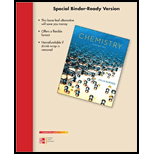
Concept explainers
Interpretation:
The structure of the compound has to be rewritten in another form.
Concept introduction:
The skeletal or line formula is the shorthand formula of an organic compound. It shows the skeleton of the molecule in two dimensions.
The carbon atoms are represented by the vertices of the line (bond).
The formula in which the atoms are represented as they appear in the molecular structure without bonds and dashes is known as condensed formula.
Carboxylic acids are the organic compounds thatcontain
Esters are the organic compounds thatcontain
Alcohols are the organic compounds thatcontain
Amides are the organic compounds thatcontain
Aldehydes are the organic compounds thatcontain
Want to see the full answer?
Check out a sample textbook solution
Chapter 25 Solutions
Chemistry - With Access (Looseleaf) (Custom)
- B. Illustration. For each number, draw the structure of the IUPAC named compound to its given space per column. You can use any type of structural formula EXCEPT skeletal structural formula. Kindly make it clear and readable.arrow_forwardDraw molecule and write IUPAC. (Could be line or condensed structure)arrow_forwardwhat is the name of these condensed structural formulasarrow_forward
- Illustrate what is asked from the given number. Write in condensed structural form.arrow_forwardWhat is the name of this skeletal structure?arrow_forward-Determine if a heteroatom is present in the compound, and if so, which heteroatom? then determine the chemical formula for the compound and the structure for this compoundarrow_forward
 Introductory Chemistry: An Active Learning Approa...ChemistryISBN:9781305079250Author:Mark S. Cracolice, Ed PetersPublisher:Cengage Learning
Introductory Chemistry: An Active Learning Approa...ChemistryISBN:9781305079250Author:Mark S. Cracolice, Ed PetersPublisher:Cengage Learning
